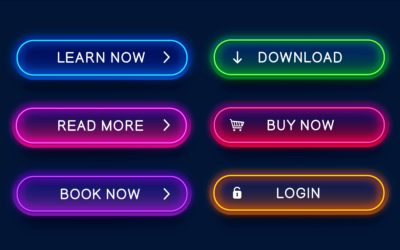If your business benefits greatly when your leads call you directly, you need to make sure that your landing pages are optimized to garner as many high-quality phone calls as possible. By using A/B testing and phone call tracking, you can develop a landing page that is responsive for phone calls and not just pretty-looking. Follow the steps below for a guide on creating a phone-call worthy landing page:
Design the landing page
If you’re creating a landing page from scratch, you want to develop one that places a focus on the overall goal: phone calls. Ask yourself these questions to get started:
- Where are you placing your phone number? Your phone number should follow naturally from your headline and call-to-action. Often, the phone number will be large, but placed only in the header, and your visitor will skip over it in favor of the headline.
This is important because you need to pitch your visitor before you give them the means to become a lead.
- How big is it? Make sure the phone number is only as large as it needs to be in order to stand out. A phone number that’s too large can cheapen your brand image, and one that’s too small will get missed.
- How does it fit in with your landing page content? Your visitor needs to know why they’re calling this number and how it benefits them. Displaying a phone number with little or poor content will make your visitor wary of making the effort to call.
- Is it the only contact option? If you also provide a form, emphasize that a phone call will provide instant attention to the visitor’s needs. Not only will it provide options for your visitor, but it will also provide a “better” option instead of the number being the “only” option.
- Does your call-to-action refer to your phone number? Even if the phone number is just the right size and in the right place, don’t forget to tell your visitor to use it! They need to know it’s for them, and not just for current customers.
Keep all of these questions in mind when designing not just your control, but your variation pages as well.
Design the variation for A/B testing
Even a well-designed control may have elements that can be changed to make it perform better, and that’s where having a variation comes into play. When designing a variation, know what you’re changing. In other words, don’t change elements of your landing page on a whim. Instead, take note of the major change you’re making (e.g., placing the content in two columns, or changing the location of the phone number). Don’t change too many elements of your landing page. Through changing just one element, you’ll know it was that change that made your landing page perform better or worse than the control page. If you make too many changes, you may not be able to tell what made the page better or worse, and you could repeat those same problems in a subsequent test. Be descriptive with naming your variation(s). The easiest name for your variation is the change you made in it, like “two-column” or “larger phone number”. As you continue testing, this will make it simpler to analyze past variations and know what’s worked and what hasn’t at a glance. With both the control and at least one variation completed, you’ll now need to set up the actual A/B test.
Know which page they called from
Without the right phone tracking system, it can be nearly impossible to determine which landing page actually generated the phone call. There are many options for tracking numbers, which can range from simple phone-number tracking to full CRM software. Use the option that works best for your business size and budget, but considering the following when choosing:
- Visitor-level tracking, or designated phone number? A visitor-level tracking system will give you the option of knowing what your visitor did on your site before they called. It provides more details, but isn’t as simple as having one phone number designated for each landing page.
- How many calls do you receive on a regular basis? The more calls you receive, the more you will want to rely on an automated system that tracks the variation for you. Don’t make your salesman mark each variation – they may not find it as significant, which can lead to missing or wrong information.
- How often do you need to follow-up with leads? If you have a more complex sales process, it’s likely you’re already using software to automate some of that. Many use a full CRM, but for phone number tracking, simpler marketing automation software is also available.
Nurture Your Leads
Not all leads are created equally. Some phone calls from your variations will turn into profitable closes, while others will just ask a couple questions. If you go purely based on the number of calls, you may be skipping over elements of your landing page that appeal more to visitors that are ready to close, and not just those that are ready to just call. Through nurturing your leads, you can picking the right landing page for closes, not just calls. The right marketing automation software can help with lead nurturing by keeping track of which leads closed right alongside the variation it belonged to.
Determine confidence levels
When your overall goal is phone calls, knowing that you have enough data before making a conclusion on your landing pages is very important. Flukes happen often with wrong numbers, repeat callers, and returning customers, so the data needs to be solid in order for the right decision to be made on which landing page variation to keep. Because of this, your test should also favor the control at an 80/20 or 90/10 ratio. You know how your control is performing, and it’s possible that a test may perform worse. If you were to set a 50/50 ratio, you would be sending half of your traffic to a page that did poorly. If the variation happens to do well, it will become the new control, and should receive much more of the traffic than an unknown variation. Betting on a poor variation will cost more than going slow and trickling in a good variation.
Test new formats
Testing is a constant process, and will never be finished. Continue to test pages even as you arrive at a landing page that seemingly can’t be beat. Visitor tastes change and there will never be a “perfect” landing page. Keep up with the current design trends, and make them work for your business and your overall goals. Even if a landing page you like was meant for a download, you can test it with a phone number emphasis to see how it performs. The best landing page is a constantly changing one, and if you’re seeking the increasingly difficult phone call as a goal, it’s imperative to continue working towards an effective, response landing page.




